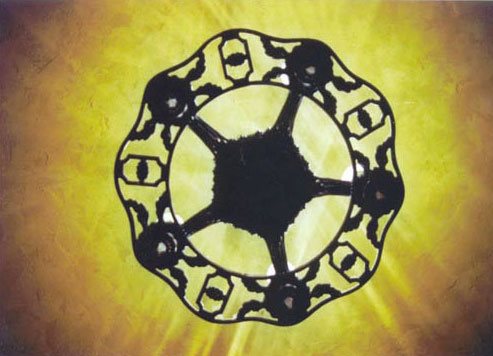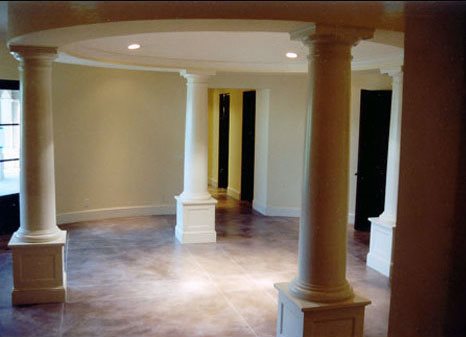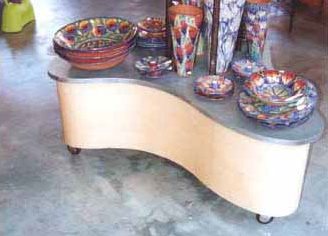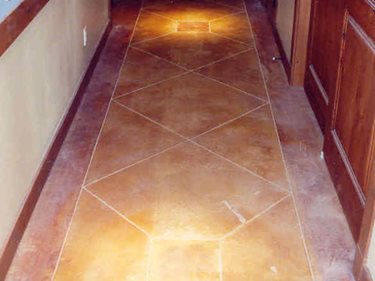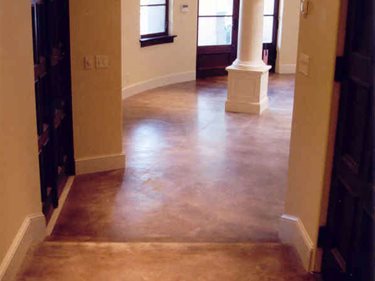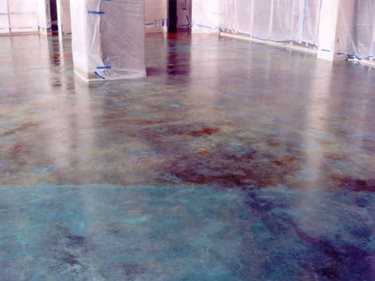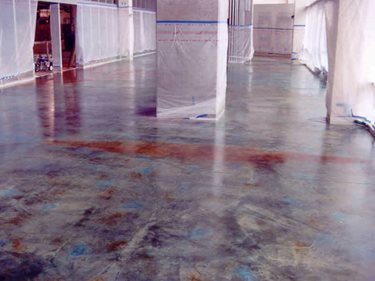- Staining Concrete
- Stamped Concrete
- Concrete Overlays
- Concrete Resurfacing
- Concrete Polishing
- Concrete Dyes
- Colored Concrete
- Indoor Concrete
- Concrete Floors
- Concrete Countertops
- Garage Floor Coatings
- Furniture, Sinks, Fire Bowls
- Basement Floors
- Outdoor Concrete
- Concrete Patios
- Concrete Driveways
- Concrete Pool Decks
- Outdoor Kitchens & Counters
- Outdoor Fireplace
- Concrete Walkways
- Concrete Pavers
- Concrete Walls
- Repair & Maintenance
- Foundation Repair
- Concrete Crack Repair
- Concrete Sealers
- Building with Concrete
- Concrete Homes
- Concrete Basements
- Decorative Concrete
Maverick Specialty Contracting
A Trailblazer in Decorative Concrete in the Seattle AreaWhether its through his use of vivid color or European artistic influences, Maverick Specialty Contracting owner David Cates has taken the name of his company to heart, proving to be truly one-of-a-kind when it comes to decorative concrete in the Seattle area.
Cates got his start in the general concrete business in 1988 with his focus ultimately sharpening to decorative concrete. After working in decorative concrete for another company, he decided to branch out on his own about eight years ago.
"I was interested in decorative concrete because it involves art and it seemed like an interesting field," said Cates, who was a music and art major in college.
Cates specializes in concrete staining. The bulk of his work some 80 percent is in floors, but he also creates decorative concrete walls. And he estimates that about 60 percent of his work is residential; about 40 percent is commercial.
"I seemed to have got in on the ground floor, and now Ive found my niche," Cates said. "Its a risky business this decorative concrete stuff isn't easy to do."
Cates draws on European influences in his own work, particularly Italian artistry. Hes also been influenced by his visits to Latin America, where the bright, vivid colors inspire his artistic vision.
Whether its caribbean blue, silk grey, cool green, warm coffee, amber green, walnut, or caramel, Cates acid-etch stains a floors surface, ultimately giving it the Patina look that is so desirable in today's contemporary schemes. All of the colors are variegated and unique to each concrete surface.
"People in the Seattle area recognize that concrete floors are aesthetically pleasing," said Cates.
As Seattle homeowners gravitate toward decorative concrete, Cates said he is finding a sudden trend in the choice of bluestone another name for flagstone.
"The high-end (homeowners) like the look of the bluestone," said Cates. "Its real interesting. I have three lined up to do and I just did three. People seem to be getting away from the bright browns."
And Seattle homeowners in general are welcoming decorative concrete into all segments of their homes.
"Theres a trend toward using concrete in the main living space," Cates said. "Its less expensive than other floorings, its cost effective, and its unique something that nobody else has."
But Cates has also stained floors in other rooms of the house everything from hallways to bathrooms to laundry rooms.
"Today's living environments have changed, and more often people desire a distinctive look and feel in their homes," Cates tells visitors of his web site. "Decorative concrete surfaces bring the beauty of natural tones found in nature into the home or business environment."
Another trend Cates is seeing in his region is the installation of radiant floors in conjunction with decorative concrete.
A radiant floor heating system "radiates" heat from the floor and delivers the heat evenly throughout the rooms. It is quiet, inconspicuous, typically reduces energy bills 10 to 40 percent, and is healthier for the home and its occupants.
Concrete is the best material for radiant floors and is often the perfect answer for those wanting a concrete floor but fear it may feel too cold.
Many radiant floor-heating projects are in slab-on-grade concrete. Tubing is installed in the slab. Temperature-controlled water then circulates though the tubing in the slabs; this process turns the slab into a radiant panel.
Concrete presents the greatest thermal mass of any of the radiant floor heating methods, which can be a tremendous benefit in rooms or buildings with high ceilings.
Meanwhile, one of the most inspiring aspects of decorative concrete, Cates said, is the enthusiasm generated by architects and designers.
"Architects like concrete," Cates said. "And they're encouraging others."
Cates likens his artistry of decorative concrete to the natural elements.
"Mother Nature takes rock and stone and stains it using weather, natural chemicals and salts," he states on his web site. "We take concrete and help the process along by controlling the elements and their applications. The natural look of stained concrete appeals to many architects and owners. A properly stained concrete surface will last indefinitely if cared for correctly."
One of Cates favorite projects was a floor he created for the Seattle Seahawks football stadium. The floor is emblazoned with a giant Seahawk, similar to the one found on the team helmets.
"That was a lot of fun," Cates said, mentioning that another unique project was a shuffleboard he created.
Cates, a self-proprietor who has occasional part-time help, has remained busy. Hes never had to advertise; all of his leads have come from word of mouth.
But with the recent launch of his web site, and an affiliation with Concrete Network, hes looking to expand.
"I'm looking to grow my business off of that," he said. "The concrete industry is pretty dynamic and involved in promoting decorative concrete."
Cates said he enjoys a great support network and values the business relationships hes forged with those in the industry suppliers, manufacturers, and architects, among others.
"Concrete has a real important place in todays environmental and residential community," Cates said.
And the fact that owners of high-end homes are reveling in decorative concrete is a positive phenomenon for the industry in general.
"It shows they have respect for this product thats not just something on the driveway or on the sidewalk its something that people actually use in their home."
Maverick Specialty Contracting
David Cates
1105 5th Ave. Number 21
Seattle, WA 98109
(206) 285-0703
Send Mail Now - Click Here
www.maverickspecialty.com
Michele Dawson writes each week on one of the contractor members of The Concrete Network (www.concretenetwork.com). She has written about the home building industry for several years and was on the public affairs staff of the California Building Industry Association
